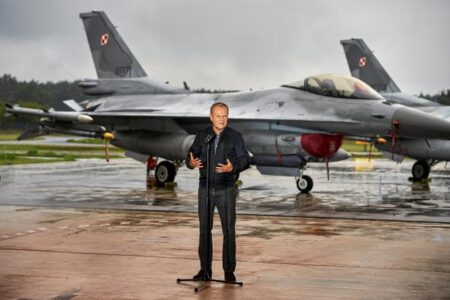In the early stages of the Ukraine-Russia conflict, former President Donald Trump asserted a series of firm “red lines” regarding U.S. involvement and Russia’s actions. As the war has unfolded with escalating consequences, questions have emerged about the fate of those declarations and whether they have influenced the current administration’s approach. This article examines the trajectory of Trump’s stated positions, assessing their impact and relevance amid the ongoing crisis in Ukraine.
Trump’s Red Lines on Ukraine and Russia Examined
Throughout the escalating conflict between Ukraine and Russia, former President Donald Trump set several notable red lines intended to influence the dynamics on the ground and shape U.S. policy. These declarations ranged from warnings against NATO involvement to specific conditions under which the U.S. would intervene or support military aid. However, as the war unfolded, many of these boundaries appeared to shift or blur, raising questions about their initial clarity and lasting impact. Analysts now scrutinize whether these so-called red lines served as strategic markers or mere rhetoric aimed at domestic political audiences.
Key aspects of Trump’s positioning can be summarized as follows:
- Opposition to direct military engagement: He consistently expressed reluctance to commit U.S. troops to the conflict, favoring diplomatic and economic leverage instead.
- Expectations for European burden-sharing: Trump emphasized that European allies should take on greater responsibility in handling Russian aggression.
- Sanctions as a primary tool: Economic sanctions formed the backbone of his strategy, though their timing and enforcement saw significant debate.
| Red Line | Initial Statement | Evolution During Conflict |
|---|---|---|
| Troop Deployment | No U.S. ground forces in Ukraine | Maintained; avoided direct combat roles |
| Military Aid | Limited support, caution on weapons supply | Increased aid over time, including lethal weapons |
| NATO Involvement | Opposed deeper NATO participation | Calls for unified Western response intensified |
How Official US Policy Shifted Since the Initial Warnings
In the early stages of the Ukraine-Russia conflict, the U.S. administration under President Trump established several explicit ‘red lines’ aimed at limiting Russian advances without direct military intervention. These boundaries, which included measures such as restricting lethal aid and avoiding direct involvement, set a cautious tone that reflected a desire to balance deterrence with diplomatic channeling. However, as the conflict intensified and Russia’s actions escalated, official U.S. policy demonstrated a gradual but clear shift toward more robust support for Ukraine, effectively softening and, in some cases, redrawing those initial lines.
This evolution was marked by a series of key decisions: increased deliveries of defensive and offensive weaponry, expanded sanctions targeting Russia’s financial sectors, and enhanced intelligence sharing. Notably, the shift did not come as a single, definitive pivot but rather as a response to the unfolding realities on the ground, illustrating a dynamic approach rather than rigid adherence to early warnings. The following table highlights critical phases of this policy transformation:
| Timeframe | Policy Stance | Key Actions |
|---|---|---|
| Early 2022 | Cautious | Limited defensive aid, emphasis on diplomacy |
| Mid 2022 | Escalating support | Expanded arms shipments, targeted sanctions |
| Late 2022 to Present | Direct engagement | |
| Late 2022 to Present | Direct engagement | Provision of advanced offensive systems, comprehensive sanctions, enhanced intelligence and logistical support |
| Strategy | Purpose | Expected Outcome |
|---|---|---|
| Establishing non-negotiable boundaries | Prevent surprise escalations | Enhanced predictability in conflict management |
| Engaging NATO and UN oversight | International accountability | Reduced unilateral aggression |
| Implementing rapid-response communication | Immediate conflict It looks like your table content was cut off at the last row. Based on the context, I can help you complete the last row and if you want, format or expand the entire section. Here’s a complete version of your table row and a possible continuation: | |
| Implementing rapid-response communication | Immediate conflict de-escalation | Prevention of unintended military confrontations |




